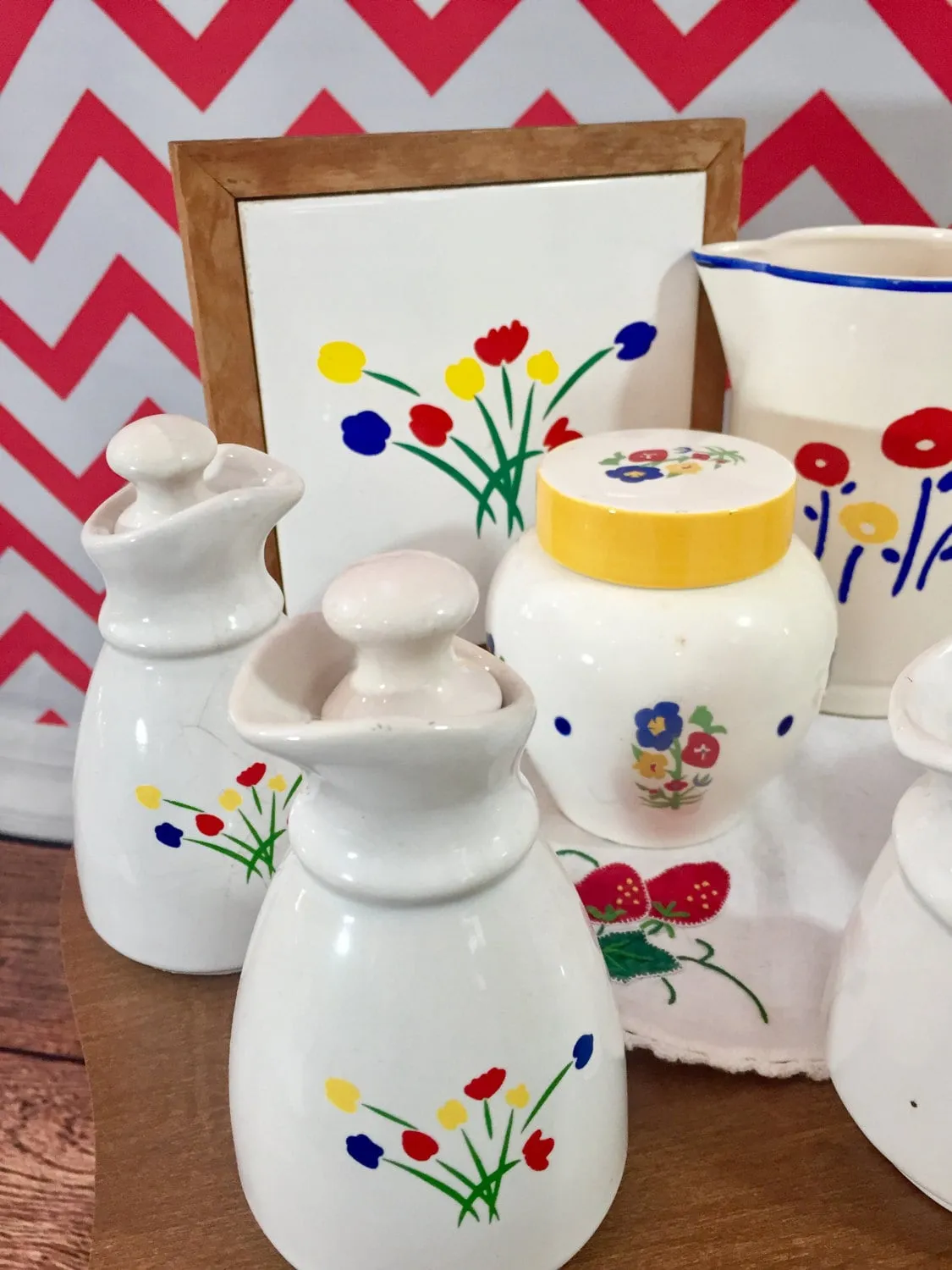Embracing Kitchen Decor 1980s
The 1980s were a decade of bold choices and innovative design, and this spirit extended to every aspect of home decor, especially the kitchen. Kitchen Decor 1980s is all about a celebration of this vibrant era. Think vibrant colors, geometric patterns, and a focus on functionality with a touch of flair. If you’re looking to infuse your kitchen with a nostalgic charm or completely revamp it with 80s flair, this guide will provide all the essential information to help you recreate that iconic 80s kitchen aesthetic. Discover the key features, learn how to revamp, and avoid common pitfalls while embracing the nostalgia and unique charm of 1980s kitchen design. This guide is your ultimate resource for transforming your kitchen into a retro haven.
Key Features of 1980s Kitchen Decor
Several distinct elements characterized 1980s kitchen decor. These include the prominence of bold colors, the widespread use of Formica, and the emphasis on open layouts and efficient space utilization. This was a period of innovation, with new materials and designs emerging to meet the needs of a modern, fast-paced lifestyle. Understanding these key features is essential to successfully incorporating 1980s elements into your kitchen design. The goal is to strike a balance between the retro aesthetic and modern functionality, creating a space that is both stylish and practical. The use of these elements is what distinguished the 1980s kitchen.
Bold Colors of the 80s
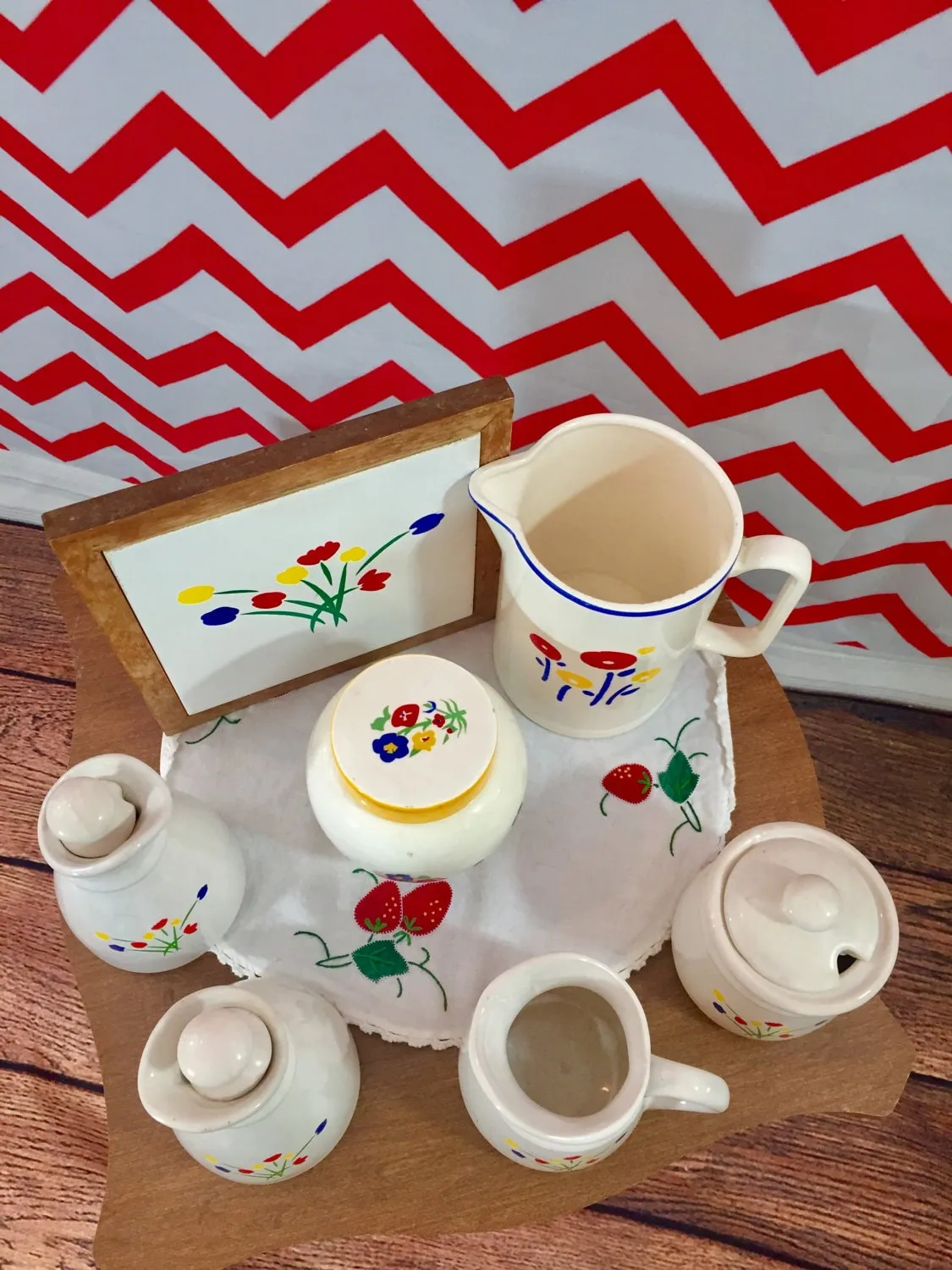
The 1980s were not shy when it came to color. The decade was characterized by a vibrant palette that included everything from electric blues and hot pinks to teal, peach, and bright yellows. These colors were often used in combination, creating a striking and energetic atmosphere. The bolder the better was the mindset of the 80s. Cabinets, appliances, and even countertops were splashed with these eye-catching hues. Accenting with these colors helped to create a lively and dynamic space. The use of these colors was not just limited to the walls, but it extended to the cabinetry, countertops, and even appliances. This bold approach to color was a defining characteristic of 1980s kitchen design.
The Rise of Formica
Formica, a laminate countertop material, was a staple in 1980s kitchens. It offered an affordable and durable alternative to traditional materials like wood or stone. Formica came in a vast array of colors and patterns, allowing homeowners to achieve a variety of looks. From solid colors to geometric designs, Formica countertops were a defining feature of the era. Its affordability made it a popular choice for budget-conscious homeowners, while its easy-to-clean surface was perfect for busy families. The material’s versatility allowed for a wide range of design possibilities, contributing to the unique aesthetic of 1980s kitchens. Consider Formica if you’re seeking an authentic 80s kitchen look.
How to Revamp Your Kitchen
Revamping a kitchen to reflect the 1980s style requires a careful blend of retro elements and modern sensibilities. The goal is to create a space that evokes the vibrant energy of the decade while remaining functional and practical for contemporary living. The process starts with careful planning, considering your existing kitchen layout, budget, and personal style preferences. You can transform your kitchen into a stylish and functional space that pays homage to the 80s. Remember to balance the retro aesthetics with modern practicality, creating a kitchen that is both visually appealing and suitable for everyday use. With the right approach, you can successfully bring the 80s back to life.
Planning Your Kitchen Revamp
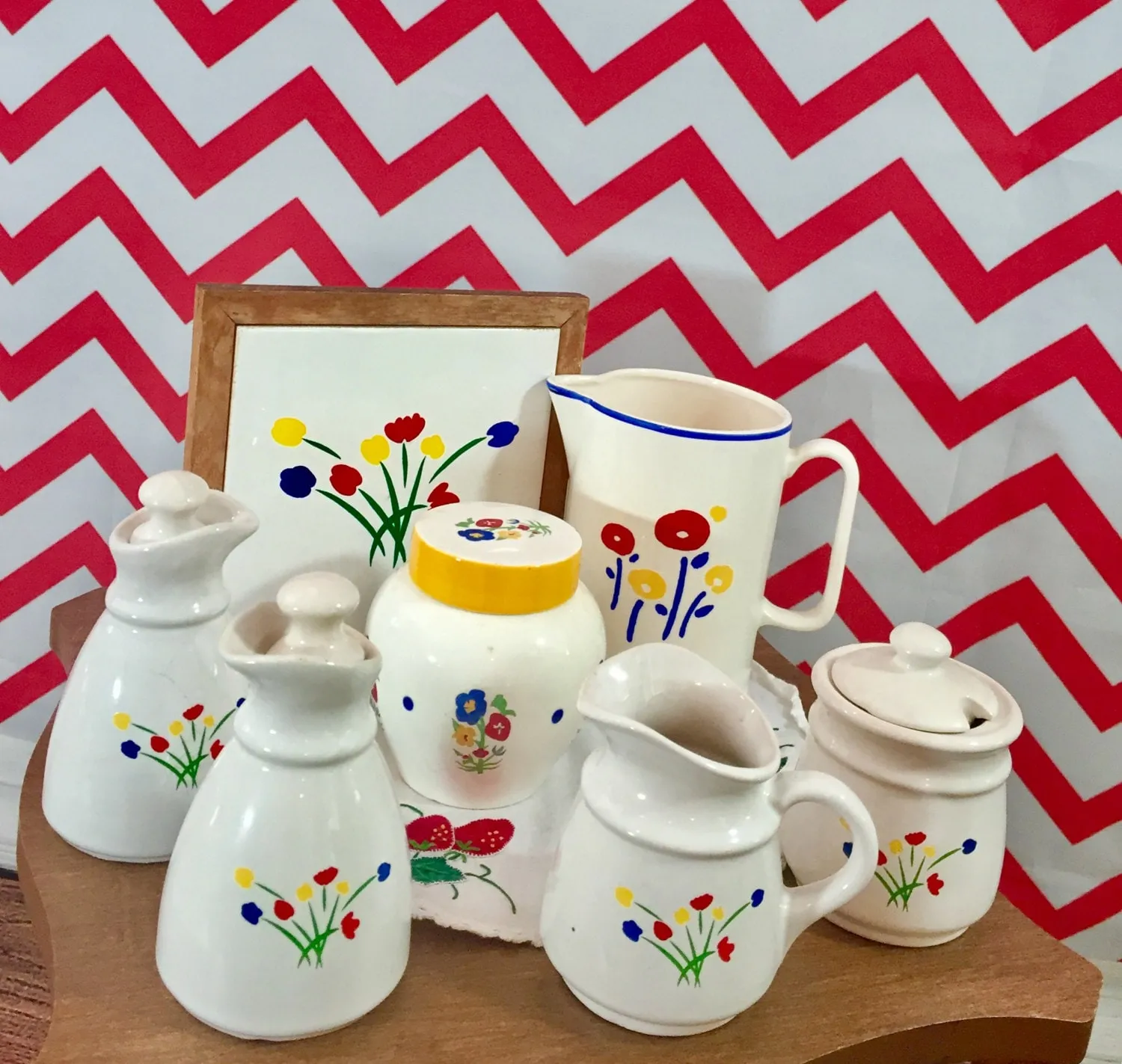
Before diving into the renovation, it’s crucial to plan meticulously. Start by assessing your current kitchen layout and identifying areas that need the most attention. Set a realistic budget and timeline to avoid overspending and delays. Research different 1980s kitchen styles and gather inspiration from magazines, online resources, and design blogs. Sketch out a floor plan and visualize the changes you want to make. This will help you refine your design ideas and make informed decisions about materials, colors, and finishes. Think about the functionality of your kitchen, ensuring that the design meets your needs. Planning is key to a successful revamp.
Selecting a 1980s Style
Consider the specific style elements you want to incorporate. There was not just one style in the 80s. Some popular options include the Memphis design, known for its bold geometric shapes and vibrant colors, and the more minimalist approach which still used strong colors but kept lines and shapes more simple. Consider which features align best with your personal taste and kitchen layout. Think about how these different elements can work together to create a cohesive and visually appealing space. This selection will guide your choices and help you achieve your desired retro aesthetic. Do some research to identify what elements of this decade appeal most to you.
Choosing Your Color Palette
Selecting the right color palette is critical for achieving the 1980s look. Embrace the boldness of the era by incorporating colors like teal, peach, and electric blue. Consider using these colors for cabinets, countertops, or accent walls. If you prefer a more subtle approach, you can integrate these colors through accessories and appliances. Remember to balance the bright colors with neutral tones to create a harmonious and visually appealing space. The use of these colors is what distinguished the 1980s kitchen. By embracing bold hues, you can easily transform your kitchen into a retro haven.
Cabinet and Countertop Updates
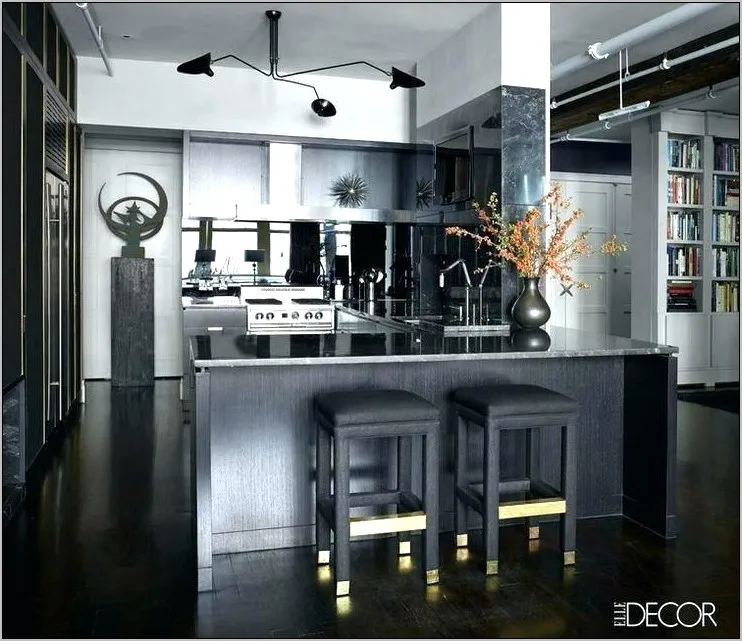
Updating your cabinets and countertops can significantly transform your kitchen. These two elements are key in establishing the 1980s aesthetic. Whether you’re opting for a complete cabinet replacement or simply refinishing the existing ones, the style and color of your cabinets set the tone for your kitchen’s overall design. Similarly, your countertop choices can add to the retro charm of the 80s. By focusing on cabinets and countertops, you can establish a strong foundation for a truly 1980s-inspired kitchen makeover. Choosing the right materials and finishes will bring that desired retro appeal.
Updating Kitchen Cabinets
Consider the style and color of your kitchen cabinets. The 1980s saw the rise of laminate cabinets in bright colors. If you’re keeping your existing cabinets, consider repainting them in a bold color or adding new hardware. Alternatively, you could replace them with cabinets that feature a more authentic 80s design, like those with flat-panel doors or raised panels. These cabinets can create a retro kitchen feel. Remember to choose cabinet styles and colors that will complement your overall kitchen design. For a more subtle approach, focus on the cabinet hardware – replacing knobs and pulls can make a big difference.
Formica Countertop Considerations
Formica was a defining feature of 1980s kitchens. Consider installing Formica countertops. Formica came in an array of colors and patterns, allowing for a variety of looks. You can choose a solid color or a design. Ensure your Formica countertops are durable and easy to clean. The countertop is an important part of your kitchen design. If you’re looking to capture the authentic 80s look, consider Formica. It is an important element in your design.
Adding 1980s Accessories
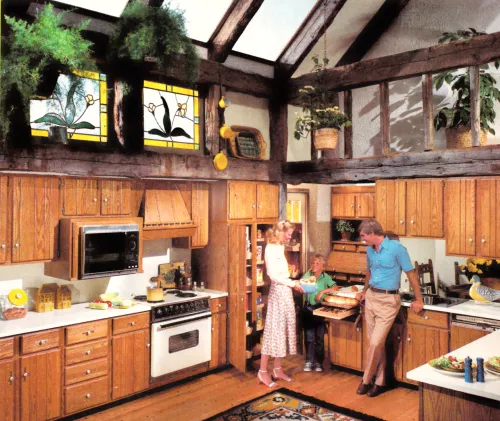
Accessories play a crucial role in completing your 1980s kitchen makeover. These items add personality and retro charm to the space. Choosing the right accessories can add to the overall aesthetic, creating a cohesive and visually appealing design. Incorporating vintage appliances, lighting fixtures, and decor will give the kitchen an authentic feel. Adding vintage accessories is a great way to infuse the spirit of the 80s into your kitchen design.
Decorative Appliances
The 1980s were known for appliances in bold colors like teal, red, and even pink. Consider adding vintage or vintage-inspired appliances. If you’re not ready to replace your appliances, you can incorporate appliances in these colors for a retro vibe. Decorative appliances are a great way to embrace the retro charm of the 80s in your kitchen. If you’re on a tight budget, consider focusing on smaller appliances and accent pieces in the signature colors. This is an easy way to add a retro touch.
Lighting Fixtures
Lighting fixtures from the 1980s often featured geometric shapes and metallic finishes. Consider installing track lighting or pendant lights with bold designs. You can also incorporate fixtures with brass or chrome finishes. Consider adding under-cabinet lighting. It helps improve the kitchen’s design and functionality. Lighting fixtures from the 80s can add a unique touch to your kitchen design. Choosing the right lighting can make your kitchen more aesthetically pleasing.
Finishing Touches
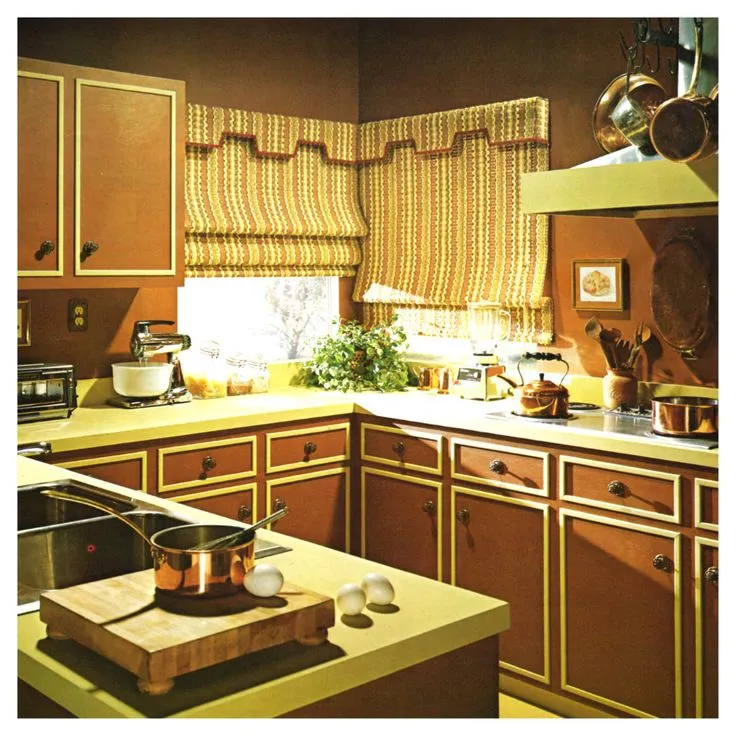
Accessories are important in the kitchen’s design. Use vintage dishware or decorative items that capture the essence of the 1980s. Add geometric patterned curtains. These details will bring your kitchen to life. Accessories should match the bold style of the era. This small detail makes a difference to your kitchen’s overall aesthetic.
1980s Kitchen Decor Mistakes to Avoid
While the 1980s were a decade of bold design choices, there are some common mistakes to avoid when revamping your kitchen. Knowing what to avoid can ensure a successful and visually appealing transformation. Being aware of these pitfalls will help you create a kitchen that’s both stylish and functional, paying homage to the 80s charm while avoiding dated designs. These mistakes can be avoided with a careful planning approach.
Overdoing the Color Palette
The 1980s were known for vibrant colors, but it’s easy to go overboard. Avoid using too many bright colors in one space. Select a few key colors and use them strategically. This will help you create a visually appealing space without overwhelming the eye. Consider the balance between colors and how they work together to create a cohesive design. Overusing color can make the kitchen feel cluttered and chaotic. Strive for balance and a cohesive design.
Ignoring Functionality
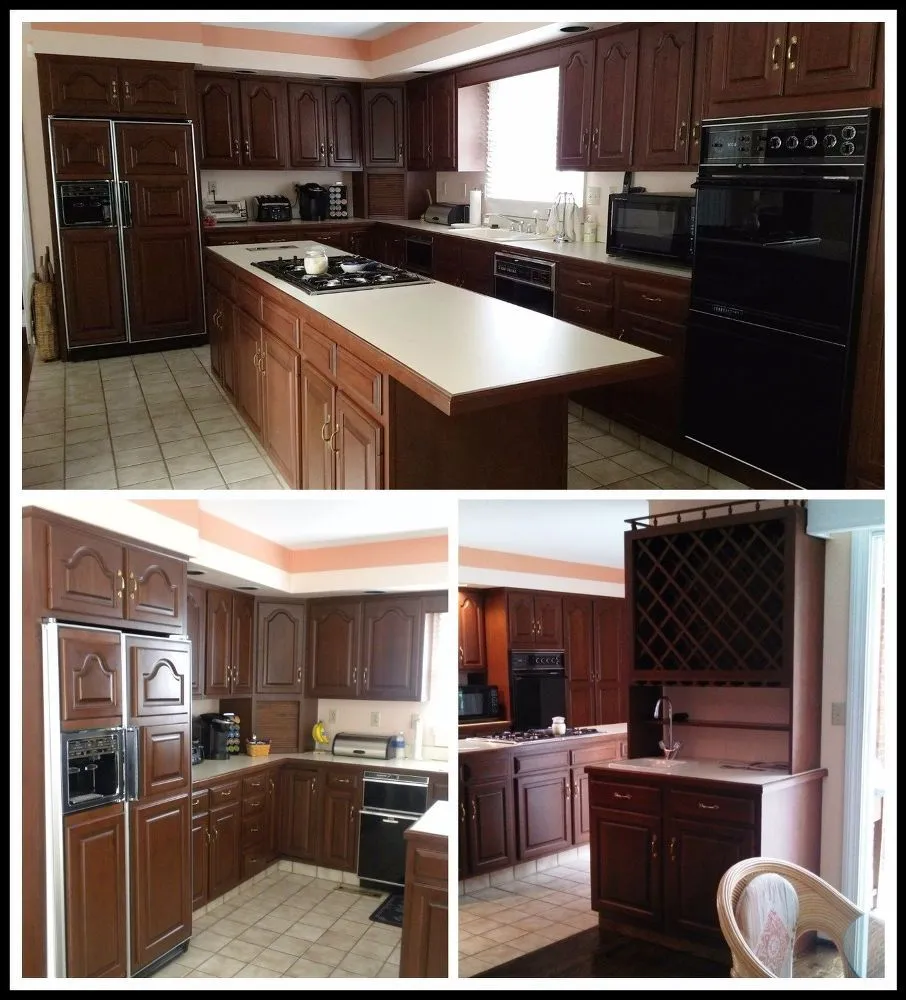
Focus on the functionality of your kitchen. Ensure that your design incorporates practical elements. A beautiful kitchen should be functional. Don’t sacrifice functionality for aesthetics. It’s important to balance style and practicality. A well-designed kitchen can accommodate a wide range of activities. Keeping functionality as a priority can create a space that meets your needs and enhances your daily life. A functional kitchen can improve your daily life.
Maintaining the 1980s Charm
The 1980s remain a unique era in kitchen design. Maintain the charm of the era while updating the space to fit a modern lifestyle. By focusing on key design elements and avoiding common pitfalls, you can create a kitchen that is both stylish and functional. Embrace the nostalgia and unique charm of 1980s kitchen design. Remember to carefully plan and stay true to your chosen style. With the right approach, you can successfully bring the 80s back to life in your kitchen.
